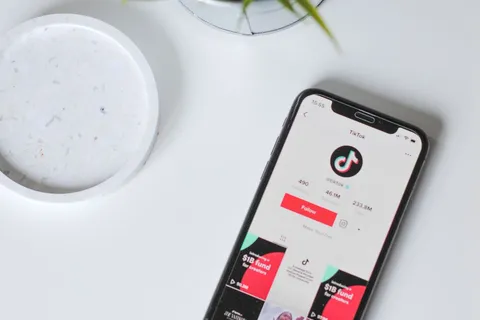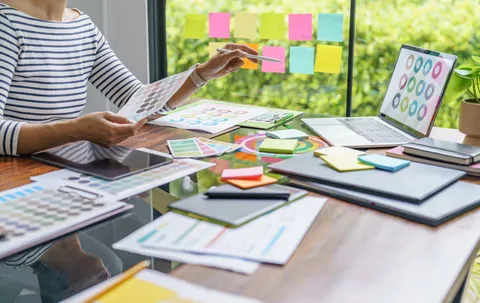Interviewing is an art that goes beyond the standard question-and-answer model. Whether it's in journalism, human resources, academic research, or customer testimonials, the right techniques are crucial for gathering insightful and meaningful information.
Moreover, knowing how to engage with your subject can also significantly influence their comfort level and openness during the interview. For this reason, honing your interviewing techniques isn’t just recommended, it’s crucial for anyone aiming to gather rich, valuable insights effectively.
The Duality of Open vs. Closed Questions: Striking the Perfect Balance
Open-Ended Questions: The Gateway to Unfiltered Insights
Open-ended questions are indispensable for getting to the heart of a person's feelings or experiences. These questions encourage expansive answers that offer a deeper insight into the individual’s viewpoint.
Moreover, open-ended questions give the interviewee the freedom to approach the question from multiple angles, often offering perspectives that the interviewer may not have even considered.
Closed-Ended Questions: The Path to Precise Information
Closed-ended questions aim for concise, specific answers that usually fall into 'yes' or 'no' categories. These questions are invaluable when you need straightforward information.
These questions are particularly useful for gathering baseline data, confirming facts, or setting the stage for more complex questions. They can act as stepping stones that pave the way for deeper inquiry.
The Rhythm of the Interview: Pacing and Timing
Prior Preparation: Crafting the Ideal Interview Blueprint
One of the underestimated keys to a successful interview is pacing and timing. Think of it as setting the tempo of a conversation. Prior preparation is what allows you to maintain this tempo, ensuring the interview goes smoothly. To nail this down, it's essential to know what you want to discuss and how much time you have.
But preparation goes beyond just a question list. If you're aiming for a top-quality interview, you'll need to have backup questions ready. These 'Plan B' questions fill in gaps and keep the conversation flowing when initial questions don't generate valuable responses. Effective interview preparation enhances both the quality and flow of the conversation.
Maximizing Time: The Do's and Don'ts
Running an effective interview also means being mindful of time. It's about depth and breadth—deep-diving into topics without overstretching the interview duration. Pacing your questions and answers well ensures that both you and the interviewee make the most out of the limited time.
But you don't need to rush through your questions. It's more about having a solid plan. Consider using a discreet timer or set milestones in your list of questions. This helps you track whether you need to wrap up or can afford to delve deeper into specific points. It's a win-win: you cover more ground and your interviewee feels their time is well-spent.
Adapting on the Fly: The Dynamics of Interview Pacing
Every interview is a unique experience. Both your mood and that of your interviewee can affect the conversation's flow. That's why it's vital to adapt your pacing dynamically. A static pace can lead to a dull, unengaging conversation.
Here's where your observational skills come in handy. Reading non-verbal cues, like facial expressions and body language, can give you clues about when to speed up or slow down the tempo. If the interviewee seems enthusiastic, why not explore the topic further? If they look disinterested, perhaps it's time to move on. It's this adaptability that separates a good interview from a great one.
The Silent Power of Active Listening: Elevating Interviews Through Engagement
A Two-Way Street: The Principle of Reciprocity in Active Listening
Listening is the other half of any conversation, and interviews are no exception. In fact, active listening has the power to turn a one-sided interview into a dynamic exchange of insights. When you listen actively, you're not just waiting for your turn to speak—you're fully engaged in understanding what the interviewee is saying.
The magic of active listening lies in its reciprocity. When you show that you're engaged and understanding, it prompts the interviewee to share more openly. It's a virtuous cycle: the more attentively you listen, the more comprehensive and valuable the information you receive. This elevates the quality of the dialogue, making it more than a simple Q&A session.
Emotional Intelligence: A Key Component of Active Listening
Active listening goes beyond the auditory; it's also about reading between the lines to understand the emotional subtext. Emotional intelligence is key here—it allows you to connect with the interviewee on a deeper level, picking up on subtle cues that may indicate how they truly feel about a topic.
As you listen, pay attention to the interviewee's tone, pitch, and pace. These auditory clues can reveal a lot about their emotional state and how comfortable they feel during the conversation. This additional layer of understanding can provide invaluable context for the interview, shaping how you approach subsequent questions.
Signal Your Engagement: Non-Verbal Cues in Active Listening
Active listening isn't a silent activity. Using non-verbal cues like nodding, maintaining eye contact, and even subtle facial expressions can show that you're fully engaged in the conversation. These signals can act as positive reinforcement, encouraging the interviewee to delve deeper into their responses.
Your body language can serve as a feedback mechanism during the interview. Simple acts like leaning in slightly or maintaining an open posture can transmit a powerful message of engagement and attentiveness. This fosters a conversational environment where the interviewee feels validated and heard, increasing the likelihood of a successful interview.
Setting the Tone: Designing an Interview Space for Maximum Comfort and Openness
Creating a Safe Space: The Importance of Physical Environment
When it comes to interviews, the saying "first impressions last" rings particularly true. The physical environment where the interview takes place has a direct impact on the interviewee's comfort level. It acts as the opening act, setting the stage for a fruitful discussion or, conversely, creating barriers to open communication.
A welcoming atmosphere in an interview does more than just ease initial nerves. It's a fundamental part of the interview process that dictates how freely ideas will flow. The space should be free from distractions and interruptions, ensuring that both the interviewer and the interviewee can focus solely on the conversation at hand.
The Role of Lighting: Setting the Mood for Effective Conversation
Lighting does more than just illuminate a room—it creates a specific ambiance. Whether the lighting is harsh and glaring or soft and warm can greatly influence the emotional tone of your interview. Proper lighting is key to making your interviewee feel at ease, thereby encouraging more open and honest dialogue.
Different types of interviews may require different lighting conditions. For instance, a formal corporate interview might benefit from bright, neutral lighting, whereas a more relaxed, personal interview could be better suited to softer, warmer lights. The key is to align the lighting with the goals and tone of your interview.
Acoustic Considerations: The Impact of Noise Levels
In an interview, every word matters, and extraneous noise can be a major distraction. From the hum of air conditioning to the chatter from a nearby coffee shop, noise can be an unexpected obstacle in capturing clear and focused responses.
Noise management should be a part of your pre-interview preparation. Ensure the space is sufficiently insulated from outside distractions. Sometimes, it’s the smallest details like turning off unnecessary electronic devices or choosing a quiet location that make the biggest difference in audio quality.
Ergonomics and Furniture Arrangement: More Than Just Aesthetic Choices
The arrangement of furniture in the interview space can subtly influence the power dynamics and the general flow of conversation. A round table might encourage a sense of equality, while a desk between the interviewer and interviewee can establish a formal tone.
Beyond aesthetics, the furniture should offer ergonomic comfort for an extended conversation. The last thing you want is for physical discomfort to become a distraction during a critical discussion. Therefore, choosing the right furniture is not just about looks; it's about facilitating an effective interview.
Adapt or Perish: The Necessity of Tailoring Your Interview Techniques to Individual Needs
Unique Requirements: Acknowledging Individual Differences for a More Successful Interview
The beauty of human interaction lies in its complexity and uniqueness. This notion is particularly crucial when it comes to interviewing. Each person you interview brings a distinct set of experiences, opinions, and comfort levels to the table. Recognizing these unique requirements can spell the difference between a lackluster interview and an enlightening one.
Embracing the uniqueness of each interviewee also means customizing your approach to suit them. While a structured outline can serve as a useful roadmap, it shouldn’t restrict you from pivoting when the situation calls for it. Being flexible in your methodology will allow you to capture a fuller, more nuanced picture of your subject.
The Scope of Adaptability: Beyond Just Questions
Adaptability in interviews is not limited to the kind of questions you pose. It extends to the tempo of the conversation, the emotional tone you set, and even the environment where the discussion happens.
For example, some interviewees may be more comfortable in a formal office setting, while others might open up more in a casual café atmosphere. Similarly, some may prefer a rapid-fire question-and-answer format, while others may thrive in a conversational setting. Reading these cues early on can set the stage for a more successful dialogue.
Adapting to Communication Styles: Recognizing Verbal and Non-Verbal Cues
A seasoned interviewer knows that communication extends beyond words. Non-verbal cues like body language, eye contact, and even pauses can provide invaluable insights into an interviewee's comfort level and honesty.
Being adaptable means being perceptive to these cues and adjusting your style accordingly. For instance, if an interviewee appears uncomfortable or hesitant, it may be a signal to slow down the pace or shift to less sensitive topics before delving into more complex issues.
READ MORE

A guide to choosing the right type of video for your Instagram marketing strategy.

The Rise of Social Media Video: Why You Need to Get on Board. Video production Melbourne
Tailoring the Environment: A Physical Space That Aligns With Individual Needs
We’ve discussed the general importance of setting a conducive environment for interviews. However, it’s crucial to remember that the ‘ideal’ setting can differ dramatically from one person to another.
Prior to the interview, consider asking your interviewee if they have a preferred location or any specific needs that could be accommodated. Such a gesture not only shows that you care about their comfort but also helps them relax, enabling a more authentic conversation.
Conclusion
Mastering interviewing techniques is a long-term commitment that requires ongoing learning and adaptation. Implementing these advanced techniques sets the stage for meaningful dialogue.
Continual reflection and refinement of your interviewing methods will not only improve the quality of the information you gather but also contribute to your personal development as a skilled communicator. Whether you’re in HR, journalism, or any other field that requires effective interviewing, these techniques are your toolbox for success.
In the digital age, the right video can be a game-changer for your brand, transforming audiences into loyal customers and elevating your revenue. Choose Video Production in Melbourne, Adelaide, and Sydney by Vimi and unlock the potent blend of creativity and strategic insight.





